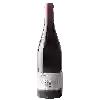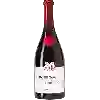
Winery Nicolas PotelTerres de Gamay Rosé
This wine generally goes well with beef
Food and wine pairings with Terres de Gamay Rosé
Pairings that work perfectly with Terres de Gamay Rosé
Original food and wine pairings with Terres de Gamay Rosé
The Terres de Gamay Rosé of Winery Nicolas Potel matches generally quite well with dishes of beef such as recipes of flemish beer stew.
Details and technical informations about Winery Nicolas Potel's Terres de Gamay Rosé.
Discover the grape variety: Gamay noir
Gamay is a Burgundian grape variety that has existed since the 14th century. For fear of competition with the pinot noir of Burgundy, gamay was finally uprooted and planted in the Beaujolais region, from Mâcon to Lyon. These siliceous and granitic soils suit it perfectly, and it gives its best here. But it is also planted all over France, such as in Lorraine, in the Loire Valley, in Bugey, in Savoie and in Auvergne. Gamay is early and very productive and needs to be limited so that quality prevails over quantity. Short winter pruning of the shoots and high density of vines per hectare are the methods that allow it to produce very fruity, fresh and greedy red wines. Gamay is also very popular in red wine futures, and produces wines from the Beaujolais region with very interesting character and ageing potential. The AOCs Crémant-de-Bourgogne, Mâcon, Anjou, Touraine, Rosé de vallée de la Loire, Côtes-d'Auvergne, Saint-Pourçain, Bugey, Gaillac, Côtes du Luberon... and many vins de pays are proud of it. Today, about 36,000 hectares of Gamay are cultivated in France, including 22,000 hectares in Beaujolais.
Last vintages of this wine
The best vintages of Terres de Gamay Rosé from Winery Nicolas Potel are 2018
Informations about the Winery Nicolas Potel
The Winery Nicolas Potel is one of wineries to follow in Coteaux Bourguignons.. It offers 195 wines for sale in the of Coteaux Bourguignons to come and discover on site or to buy online.
The wine region of Coteaux Bourguignons
Coteaux Bourguignons is a wine appellation whose wines are produced in the Vineyards of Burgundy, in the east of France and more precisely in the wine regions of Chablis, Côte de nuits, Côte de Beaune, Côte Chalonnaise and Mâcon. The Coteaux Bourguignons can also exist under the following designations: "Coteaux Bourguignons", "Bourgogne grand ordinaire" or "Bourgogne ordinaire". Its vineyard benefits from a temperate-oceanic and semi-continental Climate and a Terroir made of clay-limestone soil. The Coteaux Bourguignons has the French AOC (Appellation d'Origine Contrôlée) label as well as the European AOP (Appellation d'Origine Protégée) label.
The wine region of Burgundy
Bourgogne is the catch-all regional appellation title of the Burgundy wine region in eastern France ("Bourgogne" is the French name for Burgundy). Burgundy has a Complex and comprehensive appellation system; counting Premier Cru and Grand Cru titles, the region has over 700 appellation titles for its wines. Thus, Burgundy wines often come from one Vineyard (or several separate vineyards) without an appellation title specific to the region, Village or even vineyard. A standard Burgundy wine may be made from grapes grown in one or more of Burgundy's 300 communes.
The word of the wine: Bordeaux barrel
Barrels of 220 to 225 litres. The toasting of the barrel to bend the staves (curved boards used to make the barrels) can vary according to the coopers and the demand. A gentle and slow toasting has little effect on the aromas. On the other hand, a strong toasting gives aromas of coffee or cocoa which will influence the taste of the wine. A wine barrel has already been aged for a year and has less impact on the wine than a new barrel.













